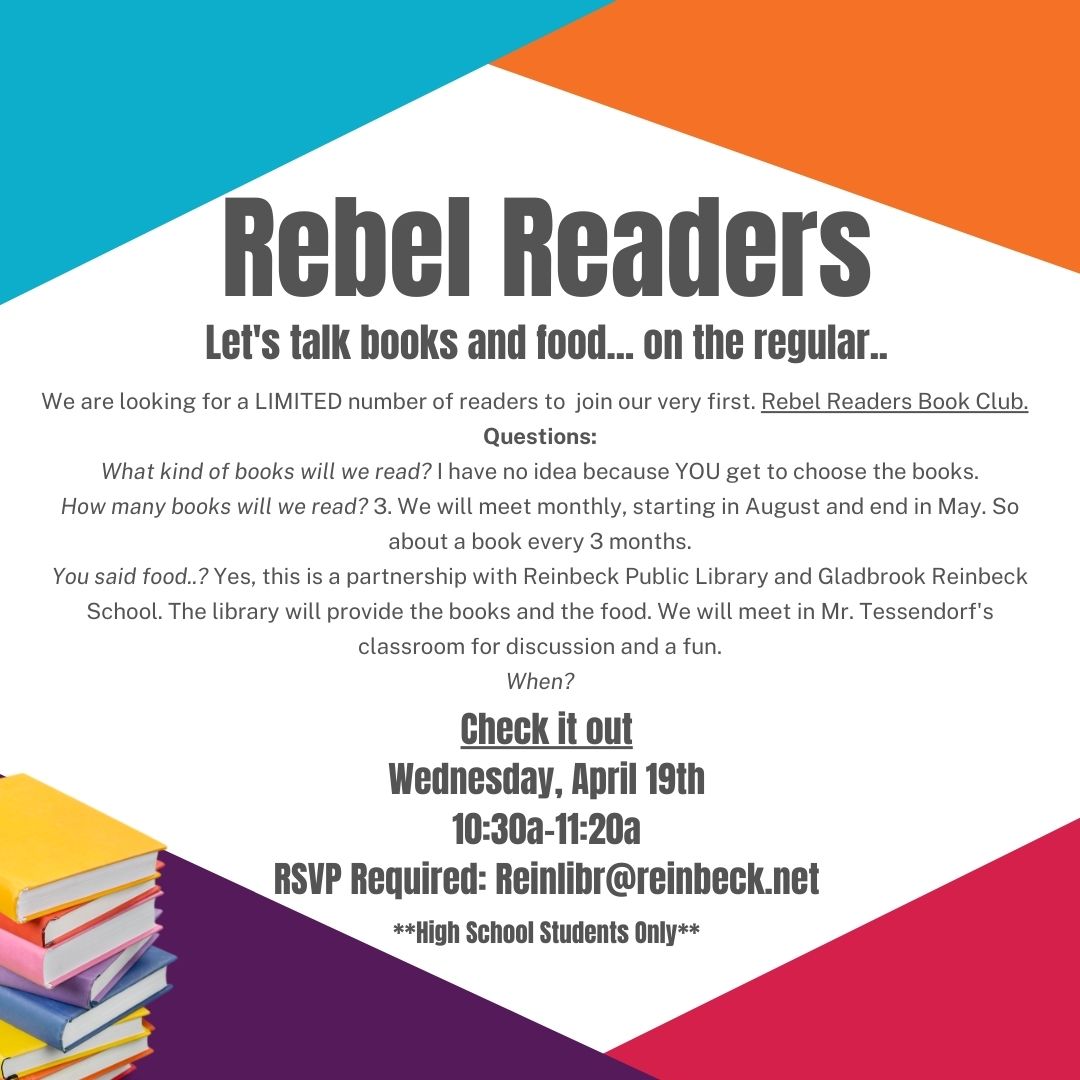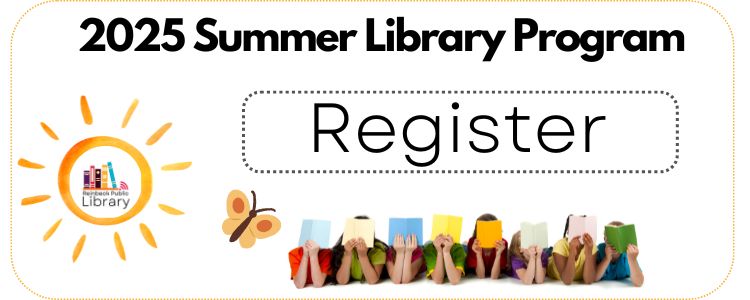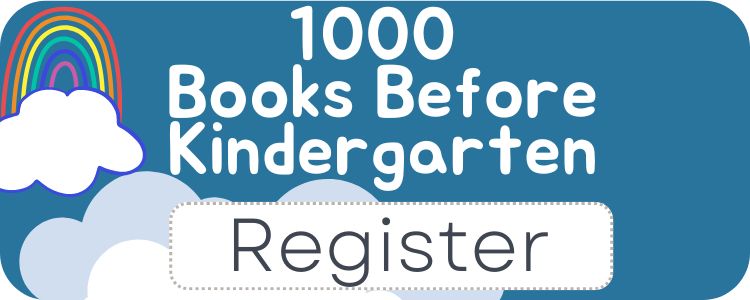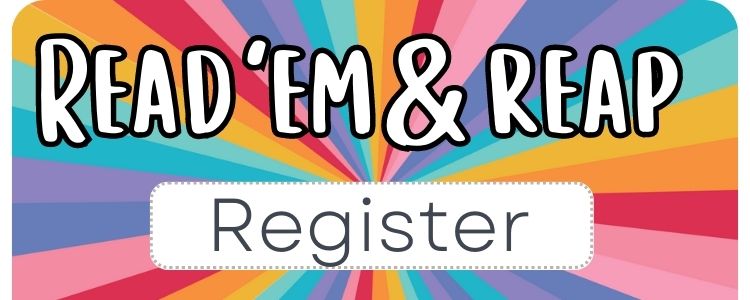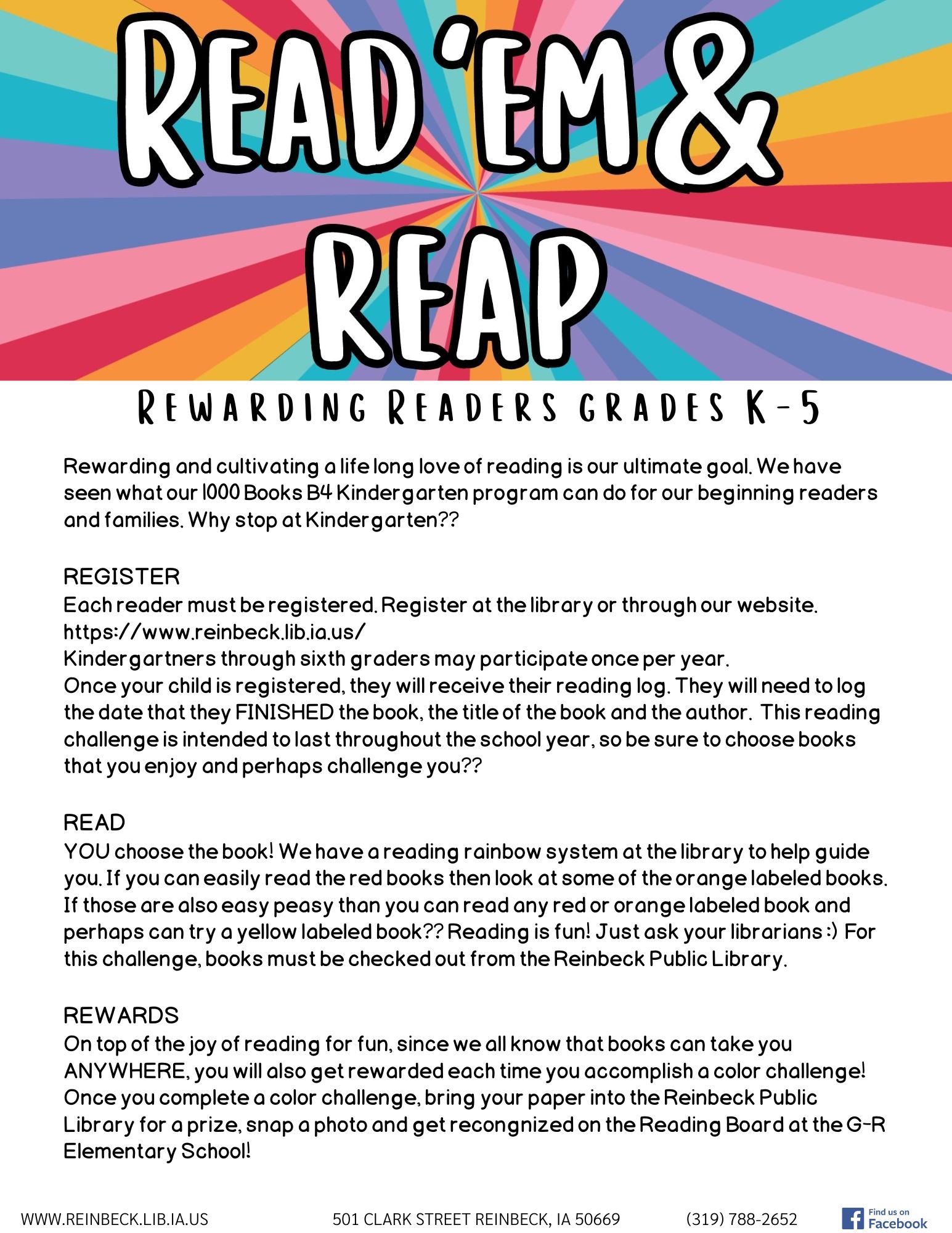Reading Incentivized Programs
A lifelong love of reading and learning isn't just something we say, it is a part of our mission. One of the ways we strive to keep reading fun is to incentivize our readers with our rewarding reading challenges and opportunities.
The concept is simple, the rewards are priceless.. well and you get prizes! Win-win! Read a book (any book) to your infant, and/or toddler (any age 0-5). The goal is to read 1,000 books (yes you can repeat books) before your little one starts Kindergarten. If you read just 1 book a night you will have read 365 books in a year. That is 730 books in two years and 1095 books in 3 years. If you consider that most children start kindergarten at age 5 then you have 2 years to spare! Not only is this achievable, but you have the Reinbeck Public Library cheering you on and helping you along the way!
Since you are reading this, you are ready to bring a lifelong love of literacy to your home and we are here to help!
- Check out stacks of library books. They are free! A librarian would even love to help you pick out the perfect books for any age, stage and interest.
- Story Times are every Tuesday at 10am at the library. Every book counts!
- You will want to stop in at every 100 books so we can celebrate this awesome achievement and get you excited for the next 100!
Reading to your baby
The youngest babies (under 6 months old) benefit from books that have simple but bold or bright images with lots of contrast. Talk to your baby as you look at the books, but words on the page aren’t necessary. As they get a bit older (7 to 12 months), you may want to expand your collection to books with simple phrases or just a line of text that relates to the picture on the page.
Babies ages 12 to 18 months may find books with pictures of other children doing everyday things interesting. Same goes for books that have animals, television characters, or other familiar scenes in them. For this age group, you may look for books that have more detailed pictures and a simple story or progression of events. As your baby starts to babble and eventually talk, try involving them in what they see on the page. For example, point to a picture and ask “What’s that?” or declare “That’s a banana!” to get your child engaging with the book. Keep it positive and try to repeat your child’s words back to them (“Yes — that looks like a cat, but it’s actually a squirrel!”).
There are lots of books, so try not to get too overwhelmed. Nursery rhymes, especially ones you might have memorized, are a good choice for babies. And as far as construction, look for sturdy books that are made from cardboard (board books), fabric, or vinyl. Books with handles are also fun and let your baby transition from reading time to play time.
Reading to your toddler
Kids between the ages of 19 and 30 months also enjoy books that feature familiar characters.
At this age, they tend to favor books with lots of action, pictures, and details versus lots of words on the page. Look for books that contain short stories, particularly those with cause-and-effect relationships or a problem that the characters must work to overcome.
Repetition is important at this age, so try to find books that allow you to rhyme, sing, or otherwise repeat the text in some way. While you’re at it, take some time to pause as you read books with repetition to see if your little one fills in the blank. You may also want to take time to draw connections between a main character and your child. For example, you might point out, “He’s sleeping in a big boy bed, just like you!” By the way, you can start introducing books made with paper pages versus board books at this age. Just be sure to supervise to guard against your child ripping the pages.
Reading to your child
Preschoolers and elementary school-aged kids have a wide range of reading abilities. It’s a good idea to take their lead when it comes to simple versus complex books.
Younger kids (and even some older ones) may still appreciate pictures with little text. That said, you can start introducing stories that have more complex plots in them and books with more words than pictures — even chapter books. As your child begins reading on their own, you might involve them in the process of reading together by asking them to read words or sentences out loud along the way. This is great practice. Ask questions as you move through the text, too — you don’t have to wait until the end of the book or chapter to check your child’s comprehension. Try open-ended questions like “What do you think might happen next?” These will help your child delve deeper, rather than surface questions like “What color is the house?” Experts recommend engaging in literacy activities (like reading) for around 30 minutes per day. But you can also think outside the book here.
Try reading traffic signs or cereal boxes, singing songs, listening to audiobooks together, or having your child read to you to the best of their ability. It’s all good.
